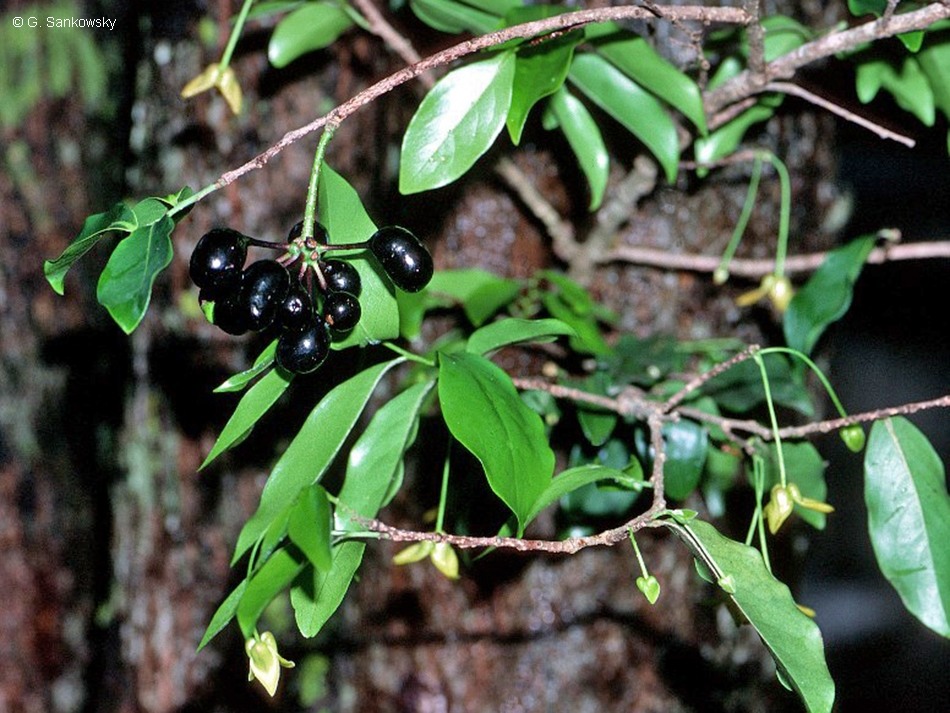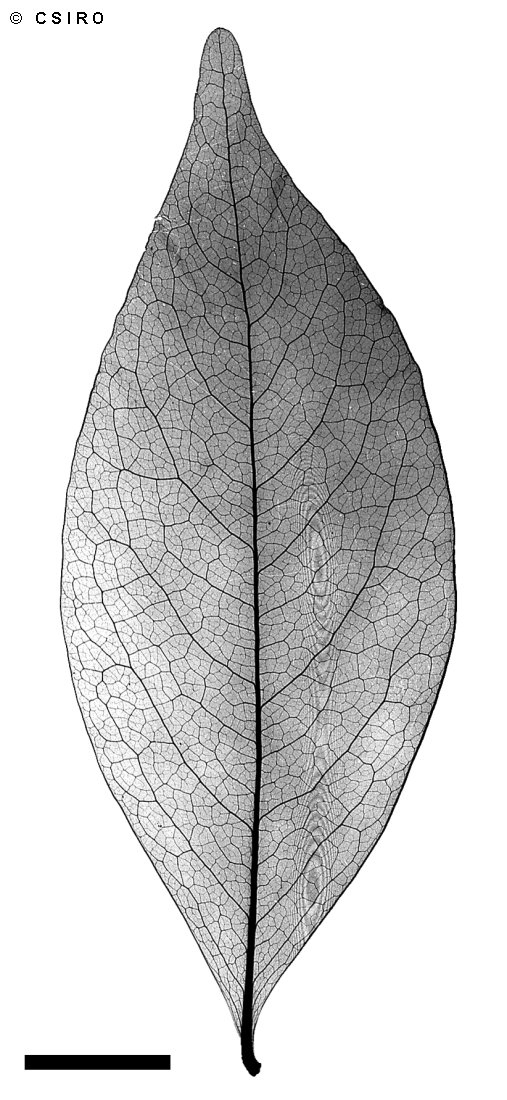Australian Tropical Rainforest Plants - Online edition
Miliusa brahei (F.Muell.) Jessup
Click/tap on images to enlarge

Flowers [not vouchered]. © G. Sankowsky

Flowers [not vouchered]. © G. Sankowsky

Fruit, side view. © CSIRO

Leaves, flowers and fruit [not vouchered]. © G. Sankowsky

Scale bar 10mm. © CSIRO

10th leaf stage. © CSIRO

Cotyledon stage, epigeal germination. © CSIRO
Family
Jessup, L.W. (1984) Austrobaileya 2(3): 227.
Common name
Raspberry Jelly Tree
Stem
Dead bark layered. Blaze finely layered. Living bark strong and fibrous when stripped.
Leaves
Flowers
Fruit
Fruiting carpels ellipsoid or subglobular, 10-27 x 10-15 mm, stalks 5-15 mm long. Seeds about 7-9 x 5-7 mm, 2-6 per carpel, testa almost smooth. Embryo minute.
Seedlings
Cotyledons broadly ovate to elliptic, 15-17 x 10-15 mm, petiole very short. At the tenth leaf stage: leaves elliptic, upper surface with a few hairs along midrib; oil dots very small and difficult to see with a lens; petiole transversely ridged, hairy. Seed germination time 19 to 34 days.
Distribution and Ecology
Natural History & Notes
Food plant for the larval stages of the Fourbar Swordtail, Green Spotted Triangle and the Green Triangle Butterflies. Sankowsky & Neilsen (2000).
Synonyms
Saccopetalum brahei F.Muell., Fragmenta Phytographiae Australiae 8: 159(1874), Type: In regionibus montanis juxta sinum maris Port Denison; Eug. Fitzalan.
RFK Code
895
Copyright © CSIRO 2020, all rights reserved.

Web edition hosted at https://apps.lucidcentral.org/rainforest




